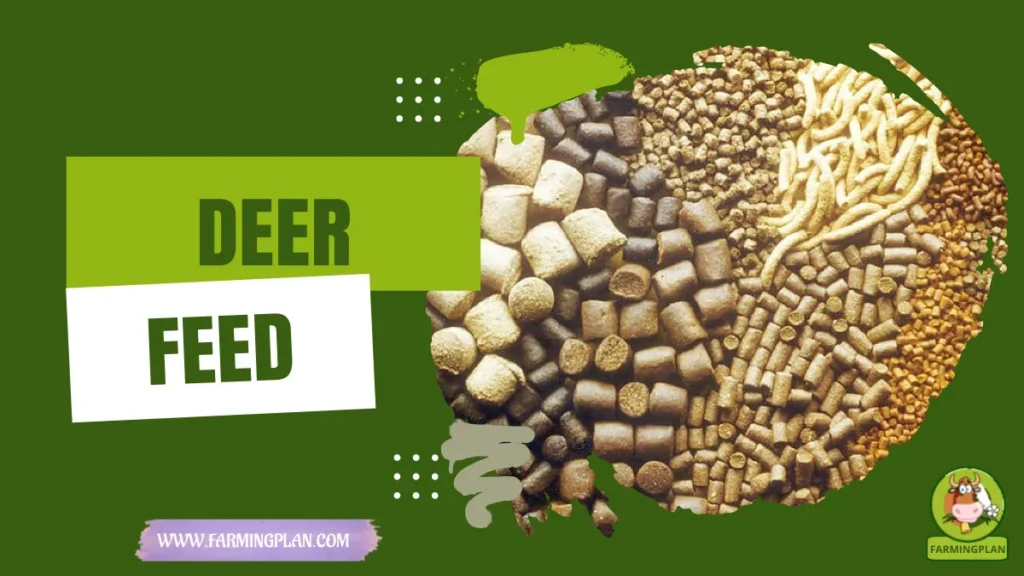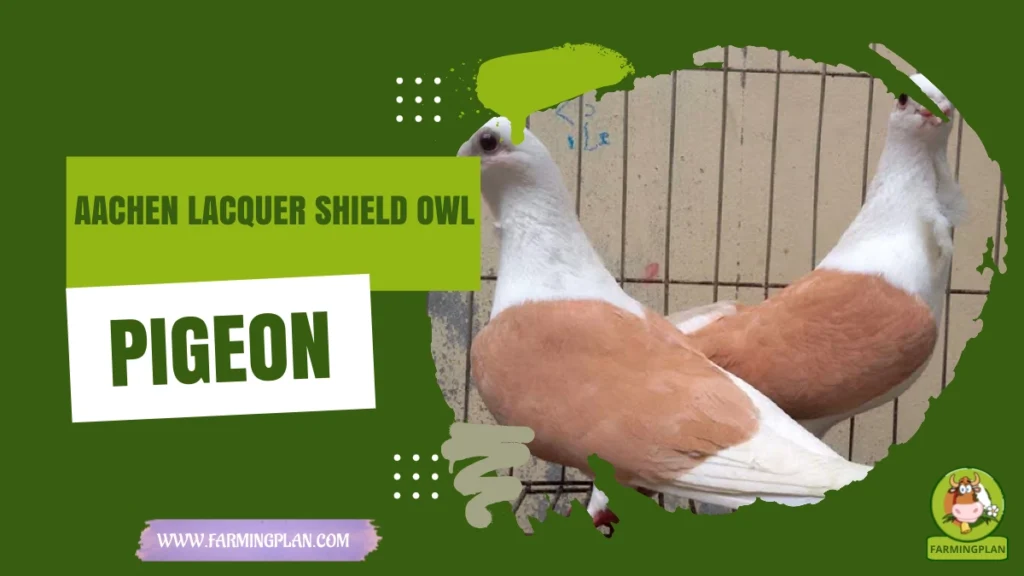If you’ve ever seen a horse with a golden-cream coat, soft white mane, and sparkling amber eyes, chances are you were admiring an American Cream Draft Horse. I’ve raised many breeds, but nothing captures hearts like these cream-coloured giants. Born and bred in the U.S., this draft horse is more than just beautiful—it’s part of our country’s heritage. In this article, I’ll share everything I know from firsthand experience: how they came to be, what makes them unique, how to care for them, and why they’re a true gem for breeders, hobbyists, and farmers alike.
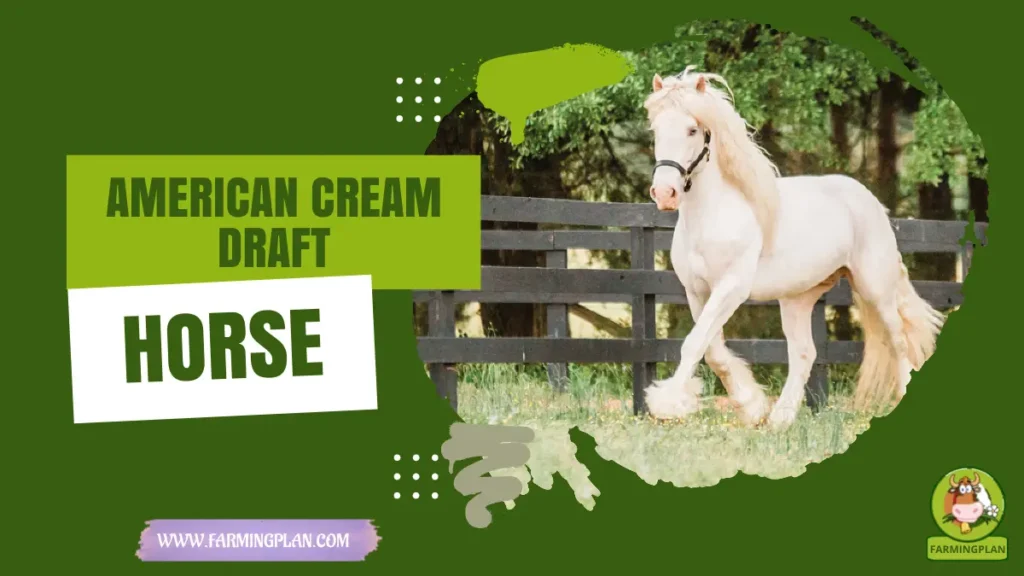
History & Origin of American Cream Draft Horse
The American Cream Draft Horse has humble beginnings, and I love telling folks this story. It all started in Story County, Iowa, in the early 1900s with a mare named Old Granny, a beautiful cream-coloured horse with pink skin and amber eyes. Local farmer Clarence T. Rierson saw her potential and began breeding her descendants. This wasn’t just a hobby—it became a movement.
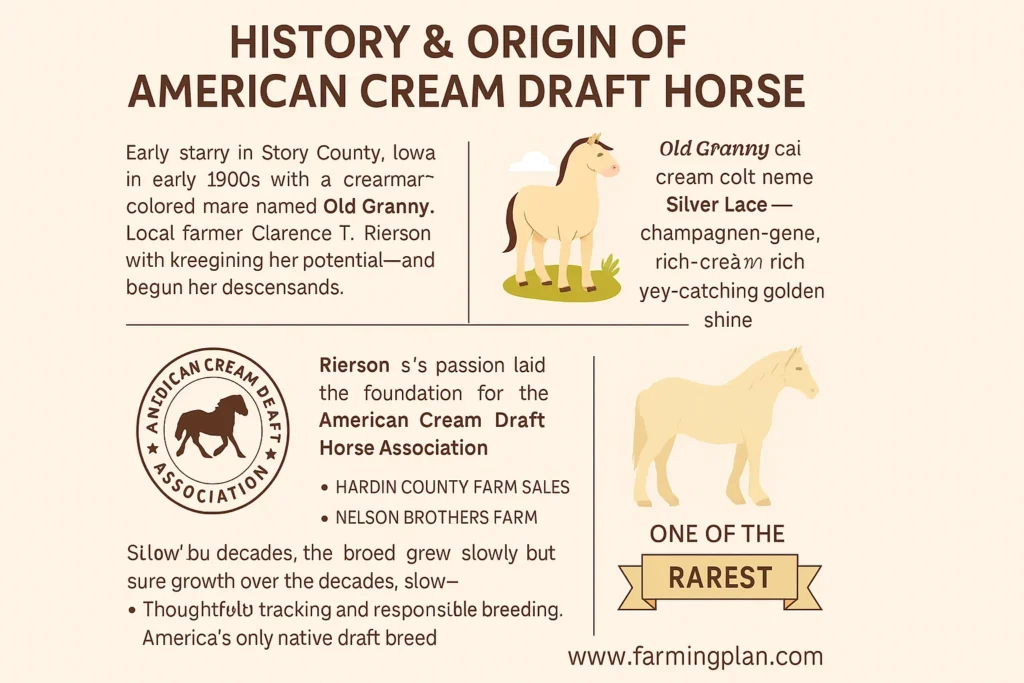
Old Granny’s cream colt, Silver Lace, carried the genetic magic we now call the champagne gene. That’s what gives these horses their signature rich cream colour and eye-catching golden shine. Rierson’s passion laid the foundation for the American Cream Draft Horse Association, which was formed to protect and promote this new breed of draft horse. Over the decades, the breed grew slowly but surely. With careful tracking and responsible breeding—often documented by places like Hardin County’s farm sales and Nelson Brothers Farm—the American Cream Draft Horse became known as America’s only native draft breed. And let me tell you—it’s still one of the rarest.
Characteristics of American Cream Draft Horse
What draws most people in—besides their stunning appearance—is just how consistent and distinct their features are. These horses have a golden cream coat that seems to glow in the sun, along with pink skin, ivory or white manes, and unforgettable amber eyes. Thanks to the champagne gene, it creates soft, luxurious colouring.
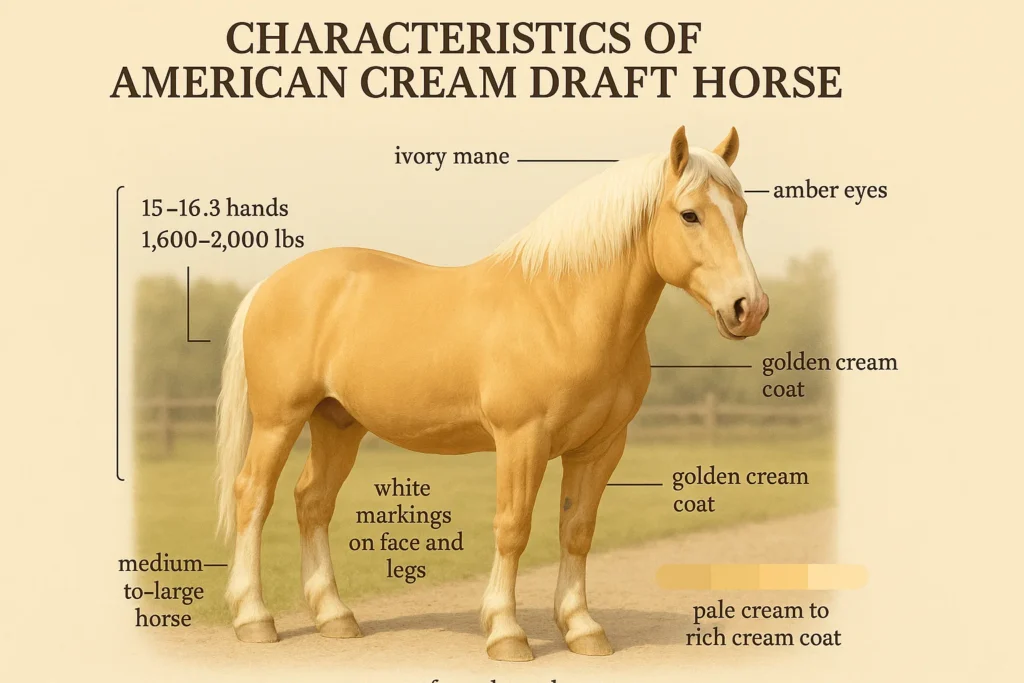
Size-wise, American Cream Drafts are medium-to-large horses, standing about 15 to 16.3 hands tall. They usually weigh between 1600 and 2000 pounds, making them sturdy but not overwhelmingly massive. Most Creams also have white markings on the face and legs, adding to their elegance. Their colouring can range a bit—some foals are born a pale cream, while others develop a darker cream or rich cream coat as they mature. But no matter the shade, they always stand out. This unique look makes them a favourite among breed enthusiasts and hobby farmers like me.
Nature & Temperament of American Cream Draft Horse
One of the main reasons I recommend American Cream Draft Horse to novice owners and families is their temperament. These horses are true gentle giants. They’re calm, kind-hearted, and eager to please—perfect for everything from small hobby farms to county fairs.
I’ve worked with all sorts of draft breeds, and the Creams are the easiest to handle. They’re not skittish, don’t get aggressive, and love attention. Whether you’re grooming their long white mane or leading them into the pasture, they cooperate with patience and grace. They’re also incredibly loyal. Once they bond with you, they’ll trust you for life. Many breeders choose to involve them in light farm work or community events. Their easygoing nature makes them ideal for pulling carriages, teaching kids how to ride, or simply being a beautiful companion in the field.
Read More: Ardennes Horse: Why This Mighty Breed Is Perfect for Challenging Tasks
Food & Diet of American Cream Draft Horse
Feeding a American Cream Draft Horse isn’t too complicated, but you do need to consider their size and workload. I usually start with good-quality grass hay, then add grains like oats or barley if they work regularly. Just ensure you’re not overfeeding—these horses can gain weight fast if you’re not careful.
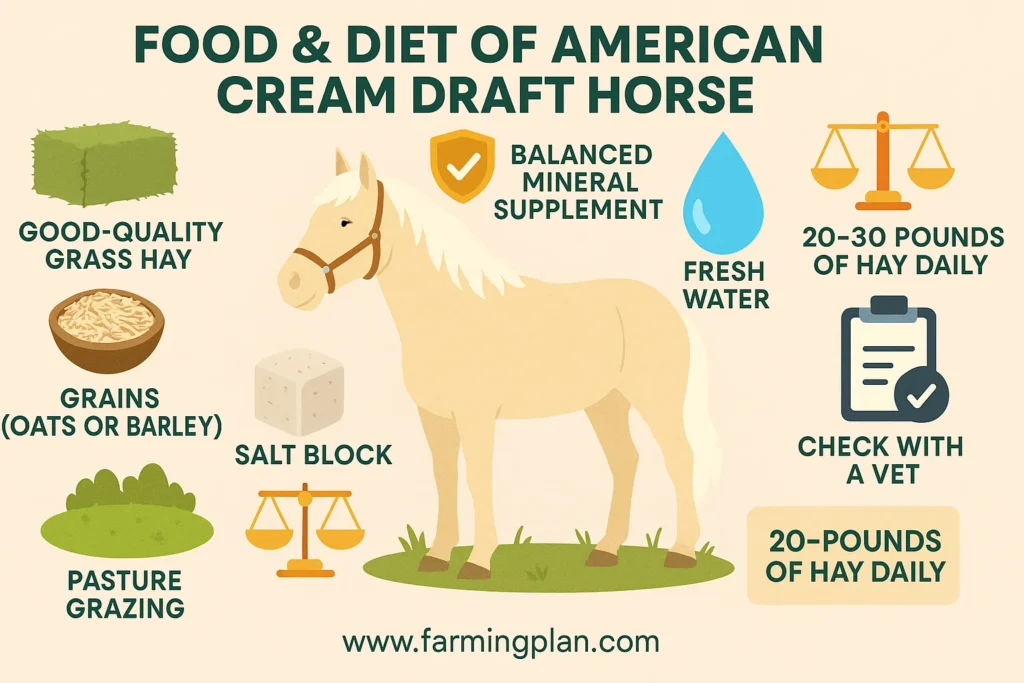
A typical adult Cream needs about 20–30 pounds of hay daily and a balanced mineral supplement. They also need constant access to fresh water, especially in the warmer months. Because of their light skin, I avoid feeds with too many artificial additives or high sugars—they tend to have slightly more sensitive digestive systems. Salt blocks and pasture grazing are great additions to their diet, but I always recommend checking in with a vet to tailor the feed plan to your horse’s lifestyle and age. Keeping your Cream on a routine feeding schedule will help them maintain ideal weight and energy levels.
Usage & Purpose of American Cream Draft Horse
People often ask me, “What are American Cream Draft Horse used for?” They can do almost anything—except maybe jump over fences like a show jumper. These horses were bred initially for light farm work and still shine today. Whether it’s playing a small field or pulling a wagon through the snow, they have the strength and stamina.
Beyond the field, Creams are increasingly popular in parades, carriage rides, and educational events at places like Colonial Williamsburg. Some owners even use them for trail riding or therapy work due to their calm nature. They also make great breeding animals. Many breeders work on creating American Cream Draft Crosses, mixing the breed with Percherons, Belgians, or even lighter breeds to diversify the gene pool. Whatever the use, Creams bring both beauty and function to the table.
Special Features
Let’s talk fun facts. The American Cream Draft Horse isn’t just another pretty face. For starters, it’s the only draft breed developed right here in the U.S. That alone gives it a special place in our agricultural history. Another cool trait? Their eye color. Thanks to the champagne gene, they have amber eyes, not the usual dark brown. This gene also causes their pink skin and cream coat, making them unique among other draft breeds.
They’ve also got a loyal fanbase. Many horses are registered through the American Cream Horse of America Association, which helps keep detailed records of bloodlines, breeding programs, and foundation stock. Breeders often refer to this info when planning pairings and maintaining healthy lines. Trust me—this traceability is gold in the draft horse world.
Health Issues & Prevention of American Cream Draft Horse
Every horse breed has its quirks, and the Creams are no different. Because of their light-coloured skin, they’re prone to sunburn—especially on their face and nose. I always recommend using sun shelters or horse-safe sunscreen during the summer.
They’re also heavy horses, so joint stress can be a concern if they don’t get enough movement. That’s why I often rotate pastures and ensure my Creams get daily turnout. I also trim their hooves regularly to keep their balance in check. I’ve noticed from tracking breeding records that responsible breeders help reduce health risks. So always check for champagne traits and a solid genetic base before buying a horse or starting a breeding program. With regular vet visits and a smart diet, your Cream can live a long, happy, and productive life.
Read More: Scottish Horse Heritage: The Forgotten History Revived with Passion
Step-by-Step Farming Guide
Raising American Cream Draft Horses is incredibly rewarding but takes care, planning, and much love. In this hands-on guide, I’ll walk you through how I raise these golden beauties on my farm—from picking healthy stock to grooming and training. Whether you’re just starting or looking to refine your process, these step-by-step instructions will help you raise strong, happy, well-behaved Creams.
Step 1: Choose Healthy Stock
Regarding American Cream Draft Horse, quality matters right from the start. I always recommend working with a reputable breeder who can provide a complete health history, genetic background, and registration papers from the American Cream Draft Horse Association (ACDHA). That registration is your proof that the horse comes from verified foundation stock and carries the distinct cream colour, pink skin, and amber eyes this breed is known for.
Look closely at the horse’s body type and temperament, too. Healthy foals should have good muscle tone, alert eyes, and a calm demeanour. I steer clear of any breeder who can’t show you lineage records or doesn’t allow you to see the parents in person. That’s often a red flag. These horses are rare, so breeding must be done carefully to protect the line. Investing in a cream mare or colt ensures you get the real deal. A healthy start makes all the difference, especially if you plan to breed or show.
Step 2: Prepare the Right Shelter
American Cream Drafts may be hardy, but their light-coloured skin and sensitive coats require extra protection from the elements—especially the sun. I design my barns with broad, shaded overhangs, proper ventilation, and at least one large stall per horse that stays cool in the summer and warm in the winter.
For outdoor time, I ensure their paddocks have shade trees or run-in shelters to protect against sunburn, particularly around their noses and backs. Their skin is more prone to sun sensitivity, so a covered turnout area is a must in my setup. Inside the stalls, I use straw or dust-free shavings for soft bedding. This not only cushions their large joints but also keeps things sanitary. Clean stalls prevent infections, and I always muck out daily to keep things fresh. I also use large water buckets or automatic waterers, so hydration is always within reach.
Step 3: Build a Balanced Feeding Routine
A well-fed Cream is a happy Cream—but it’s not just about volume, it’s about balance. I feed each horse about 20–30 pounds of high-quality grass hay daily, split between morning and evening feedings. If they’re doing light farm work or growing, I add a small portion of the grain, like oats or beet pulp, and top it off with a vitamin-mineral supplement designed for draft horses.
American Cream Draft Horse also love to graze, so I let them pasture for several hours daily. But I keep an eye on their weight—Creams can get chunky if you’re not careful. I avoid sugary treats and instead offer carrots or apples in moderation. Fresh, clean water is a must 24/7, especially in warmer months or during the work season. Also, watch for signs of colic or bloating and keep their feeding routine consistent. Significant changes in feed or grazing time can throw off their digestion, so I introduce any new food gradually over 7–10 days.
Step 4: Keep Up With Grooming
That creamy, golden coat doesn’t stay shiny all on its own! I make grooming a daily habit, especially during shedding season. Start with a soft curry comb to loosen dirt and dander, then follow with a body brush to smooth the coat. Pay special attention to their mane, tail, and underbelly—these are sensitive spots where debris and irritation build up.
Because of their light skin, I also check them daily for sunburn, dryness, or bug bites, especially around their ears, muzzle, and legs. I use fly spray and sometimes even apply horse-safe sunscreen on extra hot days. During spring and summer, I rinse them off with cool water after a workout or grazing session to keep their skin fresh. Grooming isn’t just about cleanliness—it’s a bonding ritual. These horses love a good scratch, especially behind the ears and along their shoulders. Regular grooming helps them stay relaxed, builds trust, and lets you catch minor health issues early.
Step 5: Start Training Early
Even though American Cream Draft Horse are naturally calm, early training is key if you want a responsive and safe partner. I start working with foals as soon as they’re weaned—basic halter training, leading, and handling feet are great places to begin. Keep sessions short and positive—15 to 20 minutes daily goes a long way.
Once they’re comfortable, I add voice commands for stopping, walking, and turning. I’ve found these horses are incredibly smart—they just need a little structure and a calm, steady hand. Never rush training. Let them build confidence step by step. Light groundwork, desensitizing, and harness work are significant next steps for older horses. And don’t forget to praise! A few kind words and a pat on the neck can reinforce good behaviour better than any treat.
Great Horses Don’t Just Happen—They’re Raised With Heart, Patience, And A Lot Of Grooming Behind The Ears.
Expert Tips & Best Practices
- Register all foals with the breed registry to support conservation.
- Groom regularly to avoid skin problems and keep their coat glowing.
- Rotate pastures to reduce joint stress and give them room to move.
- Don’t rush training—these horses learn best when calm and relaxed.
- Connect with other breeders via forums and newsletters for ongoing advice.
Read More: Belgian Draft Horse: The Ultimate Workhorse for Modern Farms
FAQ
How much does an American Cream Draft Horse cost?
They usually range from $3,500 to $8,000, depending on pedigree, age, and training.
What are American Cream Draft Horses used for?
They’re used in light farm work, carriage rides, therapy programs, and shows.
Are they beginner-friendly horses?
Yes! Their gentle temperament makes them perfect for first-time owners.
How much do they weigh?
An average Cream weighs between 1600 and 2000 pounds.
Where can I find one for sale?
You can start with the American Cream Draft Horse Association or look into farm sales in Iowa, especially in Hardin County.
Conclusion
The American Cream Draft Horse is more than a rare beauty—it symbolizes American farming tradition. With its creamy coat, gentle soul, and hardworking spirit, this horse makes a perfect partner whether you’re on a small farm, in a parade, or just admiring from the barn door. I love raising them and hope this guide helps you understand and care for these golden treasures. Whether you’re a new horse owner or a seasoned breeder, there’s something magical about the Creams that never fades.

